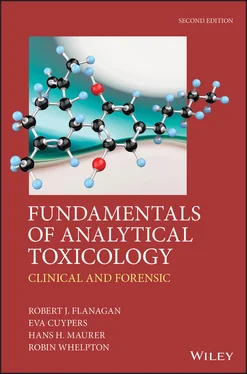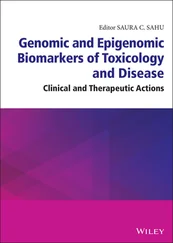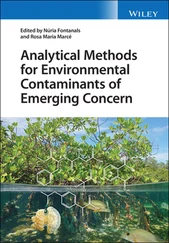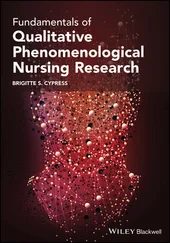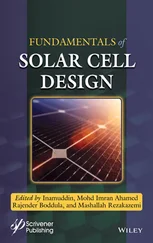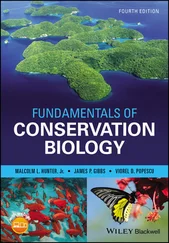Clinical samples can be divided into (i) blood and related fluids, (ii) body fluids other than blood, (iii) excretory fluids/residues, and (iv) other clinical specimens ( Table 2.2). A range of additional specimens may be collected for toxicological purposes. Special precautions will be needed with unstable analytes. Most compounds measured in urine can be considered stable for at least a few hours at room temperature because the urine may already have been held at body temperature for some time before it was voided. Nevertheless, stability testing should be included in any method validation work.
Arterial blood is normally collected by an experienced medical practitioner – it is a relatively dangerous procedure – for the measurement of blood gases and is rarely submitted for toxicological analysis. Capillary blood, which closely approximates to arterial blood, can be obtained by pricking the heel, finger or ear lobe; this procedure is most often performed on small children. Applying pressure to encourage blood flow will dilute the sample with tissue fluid.
Venous blood is obtained by venepuncture of (usually) the median cubital vein of an arm remote from any infusion site. Either a hypodermic needle and syringe (1–50 mL) or a commercial vacuum-sampling system such as a Vacutainer TMmay be employed. Care should be taken to ensure that 2-propanol or other alcohols are not introduced into the sample when using swabs to clean/disinfect the skin. A tourniquet can be used to distend the vein prior to venepuncture, but should be released immediately prior to sampling.
For repeated sampling, a small cannula may be inserted into, for example, a vein in an arm or hand that allows venous access via a rubber septum. However, maintaining patency may be a problem, and there may be risks of (i) inducing haemolysis and (ii) of specimen contamination due to use of anticoagulant or local anaesthetic solutions with such devices. The use of heparin anticoagulant solutions that contain phenolic preservatives should be avoided.
Following venepuncture, blood should be transferred into an appropriate container as soon as practicable. Some basic analytes and quaternary ammonium compounds, e.g. tricyclic antidepressants (TCAs) and paraquat, and aluminium bind to glass. Plastic tubes are thus preferred and are also less likely to shatter than glass, especially if frozen. On the other hand, if volatile compounds such as solvents or anaesthetic gases are to be analyzed, glass containers are preferred because of the risk of loss of analyte if plastic tubes are used ( Section 2.3).
| Blood & related fluids |
Blood(‘whole blood’) is the fluid that circulates through the arteries, capillaries, and veins. The adult human body contains some 5–6 litres of blood. It is composed of plasma and blood cells. Normally venous blood is obtained ( Section 2.2.3.2). If whole blood is to be analyzed, then the sample should be collected into an appropriate anticoagulant, mixed, and then frozen in order to lyse the cells before the analysis. Dried blood spots (DBS)are the residues remaining when whole blood has been allowed to dry on filter paper or another appropriate medium. Post-mortem bloodis blood obtained after death, usually at autopsy. The site of sampling should always be recorded ( Section 2.3.2.1). [N.B. Occult blood is altered blood found only in trace amounts particularly in faeces. It is not used as an analytical sample.] |
| Blood cellsinclude red cells (erythrocytes) and white cells (lymphocytes, leucocytes, platelets, etc.). All may be harvested from freshly collected blood with appropriate procedures ( Section 2.2.3.5) |
| Cerebrospinal fluid (CSF)is a plasma ultrafiltrate (i.e. its composition is that of plasma except that high M rproteins are absent) that surrounds the elements of the central nervous system (CNS). It is obtained by lumbar puncture (needle aspiration from the spinal cord) and is usually collected into sterile tubes. Samples contaminated with blood should be discarded if microbiological assessment is required |
| Cord bloodis blood obtained from the umbilical cord at parturition. Normally venous cord blood is obtained in order to reflect neonatal, as opposed to placental, blood. It may be possible to obtain plasma or serum depending on the volume available |
| Plasmais the liquid portion of blood ( Section 2.2.3.4). It is obtained by centrifugation of anticoagulated whole blood |
| Serumis the pale yellow fluid remaining when whole blood has clotted. Its composition is generally the same as plasma except that fibrinogen and factors associated with the clotting process are absent ( Section 2.2.3.3). It is obtained by centrifugation of whole blood that has been allowed to clot in the sample tube |
| Body fluids other than blood |
Amniotic fluidis the fluid that surrounds the foetus in the amniotic sac |
| Aqueous humouris the watery fluid occupying the space between the cornea and the iris of the eye |
| Bone marrow aspirateis a sample of the spongy tissue found within bones that produces blood cells |
| Breast milkis the protein and fat-rich fluid produced by nursing mothers. The first expression of breast milk (colostrum) is especially rich in protein |
| Gastric aspirateis an acidic aqueous fluid containing digestive enzymes, food residues, etc. obtained by aspiration from the stomach |
| Intraosseous fluidis fluid derived from blood and interstitial fluid residing within bones |
| Interstitial fluidis the fluid between blood vessels and cells |
| Lymphis a yellowish fluid in the lymph channel secreted from the lymph glands |
| Pericardial fluidis fluid present between the heart and the sac surrounding the heart known as the pericardium |
| Peritoneal fluidis the fluid that accumulates in the peritoneum |
| Salivais the viscous, clear secretion of the mucous glands in the mouth. It is related in composition to plasma, but also contains some digestive enzymes. Oral fluidis the preferred term for the mixture of saliva, gingival crevicular fluid (fluid from the tooth/gum margin), cellular debris, blood, mucus, food particles, and other material collected from the mouth |
| Semenis produced by the testes and the prostate gland, and consists of seminal fluid, which may be obtained from semen by centrifugation, and spermatozoa |
| Synovial fluidis the clear, viscous, lubricating liquid that fills the synovium (the membrane that surrounds a joint and creates a protective sac) |
| Tearsare the clear watery secretion of the tear ducts of the eye |
| Vaginal fluidis the viscous secretion of the vagina |
| Vitreous humouris the transparent, viscous fluid contained behind the lens in the eye |
| Excretory fluids/residues |
Bileis the thick yellow-green fluid secreted by the liver via the gall bladder into the intestine |
| Exhaled (expired) airgenerally contains less oxygen and more carbon dioxide and water vapour than ambient air, but may contain other volatile and non-volatile compounds |
| Faecesare the brown, semi-solid residues of the digestive process ( Section 2.2.6) |
| Sweatis the aqueous fluid excreted by the pores of the skin |
| Meconiumis the dark green substance forming the first faeces of a newborn infant |
| Urineis the yellow/yellow-green fluid produced by the kidney. It consists mainly of water, salts, urea, creatinine, and other metabolic products ( Section 2.2.4) |
| Other samples |
‘ Cavity blood’ is the fluid remaining in the body cavity once the organs have been removed |
| Bezoarsare stones or concretions found in the alimentary tract of animals |
| Bronchoalveolar lavageis obtained by washing the bronchi/alveoli with an appropriate solution and aspirating the resulting fluid |
| Calculi(‘stones’) are hard crystalline deposits formed in various body cavities such as the kidney |
| Dialysis fluid(extracorporeal or peritoneal) is the fluid remaining or recovered after dialysis has been performed |
| Gastric lavage (stomach wash-out, SWO)is a specimen obtained by washing the stomach with an appropriate solution and aspirating the resulting fluid |
| Hair(head, axilliary, or pubic) is sometimes used to assess exposure to poisons such as drugs or toxic metals |
| Nails or nail clippings(finger or toe) are sometimes used to assess exposure to drugs or heavy metals |
| Nasal swabsare fluid collected onto cotton swabs from inside the nose |
| Stomach contentsmay be (i) gastric aspirate, (ii) gastric lavage, (iii) vomit, or (iv) the residue in the stomach at autopsy ( Section 2.2.5) |
| Tissuespecimens are obtained either surgically, or at post-mortem. Tissue obtained from an aborted foetus and/or placenta may sometimes be presented for analysis. A biopsy sample is a small sample of a tissue obtained by a specialist sampling technique |
| Vomitreflects the composition of gastric aspirate |
If blood has been collected into a syringe, it is essential that the syringe needle is removed and the blood allowed to flow gently into the collection tube in order to prevent haemolysis. This should be followed by gentle mixing to ensure contact with the anticoagulant if one is being used. Even mild haemolysis will invalidate a serum iron or potassium assay, and may invalidate plasma or serum assays for other analytes concentrated in red cells such as chlortalidone.
